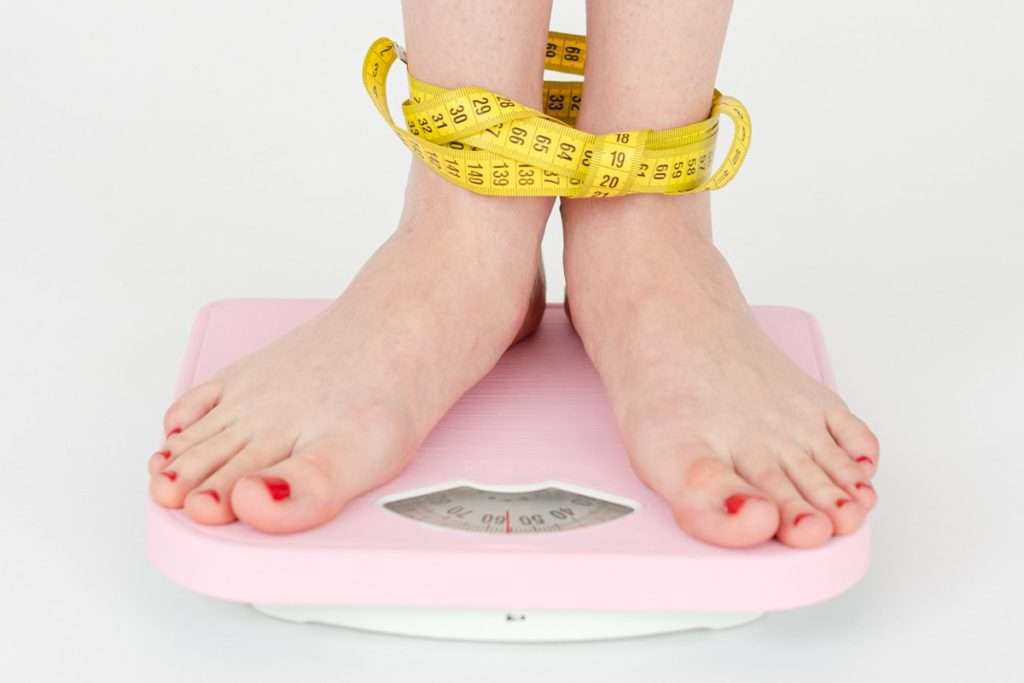Navigating the world of diets can be challenging, especially when you’re a beginner. But, if you’ve stumbled upon the term “keto diet” and found yourself intrigued, you’re in the right place.
This Ultimate Guide to the Keto Diet for Beginners will break down the essentials of this popular dietary regime, shedding light on its working mechanism, benefits, and those who might need to approach it with caution.
What is the keto diet?
At its core, the keto diet is a low-carb, high-fat diet. Unlike traditional diets that rely on carbohydrates as the primary source of energy, the keto diet shifts this focus, making fats the main fuel for the body.
The term “keto” is derived from “ketones,” which are small fuel molecules produced when your intake of carbs is low, and fat consumption is high.
How does the keto diet work?
When you significantly reduce your carbohydrate intake, your body enters a metabolic state called ketosis. In ketosis, instead of burning carbohydrates for energy, your body starts converting fat into ketones, which then act as the body’s primary energy source.
Essentially, on a keto diet, you’re training your body to become a fat-burning machine.
What are the benefits of the keto diet?
The keto diet boasts a plethora of benefits, which has contributed to its soaring popularity. Some of the main advantages include:
- Weight Loss: With the body burning fat for energy, many individuals experience significant weight loss.
- Enhanced Energy Levels: By relying on ketones for energy, which are a more consistent energy source, people often report heightened energy levels and better focus.
- Appetite Control: The keto diet can reduce hunger pangs and suppress appetite, aiding in weight loss efforts.
- Stable Blood Sugar Levels: By reducing carb intake, the keto diet can lead to a drop in blood sugar levels, which may benefit individuals with diabetes or those at risk.
Who should not follow the keto diet?
While the keto diet offers numerous benefits, it’s not suitable for everyone. Individuals with certain conditions, such as liver disease, pancreatitis, or fat metabolism disorders, should avoid the diet or approach it under strict medical supervision.
Additionally, pregnant or breastfeeding mothers and those with thyroid problems might need to consider other dietary alternatives.
With the surge in its popularity, the keto diet promises transformative health benefits. However, like any dietary regimen, it’s vital to approach it with a balanced perspective, understanding its advantages and potential challenges.
Whether you’re seeking weight loss, better energy levels, or improved overall health, this beginner’s guide to the keto diet provides a foundational understanding to embark on your keto journey.
How to Start the Keto Diet?
Embarking on the keto journey can be thrilling but also a bit daunting. From understanding your macros to knowing what’s on the keto menu, having a clear road map can make all the difference. So, let’s simplify this for you.
How to Calculate Your Macros:
Understanding Macros: In the world of diets, ‘macros’ or macronutrients refer to the three primary nutrients our bodies require in large amounts: carbohydrates, proteins, and fats.
- Determine Caloric Needs: Start by calculating your daily caloric needs. Several online calculators can help, considering factors like age, gender, weight, and activity level.
- Allocate Your Macros: On a standard keto diet, about 70-80% of your calories should come from fats, 20-25% from proteins, and 5-10% from carbs. Adjust these percentages according to your specific goals and health requirements.
What Foods to Eat on the Keto Diet:
Green Light Foods: Transitioning to keto means embracing a new set of dietary staples. Here’s a basic list:
- Fats & Oils: Avocado, coconut oil, butter, and olive oil.
- Proteins: Meat, poultry, fish, and tofu.
- Dairy: Cheese, cream, and butter.
- Vegetables: Leafy greens, cauliflower, broccoli, and zucchini.
- Nuts & Seeds: Almonds, walnuts, and flaxseeds.
What Foods to Avoid on the Keto Diet:
Red Flag Foods: Steering clear of specific foods is crucial to maintain ketosis:
- Sugary Foods: Cakes, candies, and sugary beverages.
- Grains & Starches: Pasta, rice, cereals, and bread.
- High-Carb Fruits: Bananas, oranges, and grapes.
- Legumes: Lentils, chickpeas, and beans.
- Alcohol: Most alcoholic beverages contain carbs, disrupting ketosis.
How to Track Your Progress:
Journaling & Apps: Documenting your daily food intake, noting down how you feel, and changes in your weight or energy levels can offer insights into how well the keto diet is working for you. Numerous mobile apps can assist in logging meals and monitoring macros.
Ketone Test Kits: These kits, available at drugstores, help measure the ketone levels in your body, indicating if you’re in ketosis.
Tips for Sticking to the Keto Diet
Making the switch to a keto lifestyle is commendable, but maintaining it can be a different ball game. From battling the notorious ‘keto flu’ to resisting carb cravings, persistence is key. Let’s delve into these challenges and offer solutions to help you stay true to your keto journey.
How to Deal with Keto Flu:
Understanding the Keto Flu: As you transition into a state of ketosis, your body might initially resist the change, leading to symptoms like fatigue, headaches, and irritability, collectively termed as the ‘keto flu’.
- Stay Hydrated: Drink plenty of water to flush out toxins and help manage symptoms.
- Replenish Electrolytes: Opt for bone broths, avocados, and nuts to maintain electrolyte balance, combatting symptoms like cramps and dizziness.
- Rest Well: Ensure adequate sleep to help your body recover and adapt.
How to Avoid Cravings:
Craving Combat Strategy: Carb cravings are typical when starting the keto diet, but there are ways to curb them effectively.
- Stay Full with Healthy Fats: Consuming healthy fats like avocados, coconut oil, or cheese can keep you satiated, reducing the urge for carbs.
- Distract Yourself: When a craving strikes, divert your attention with a walk, a hobby, or simply drinking water.
- Plan Ahead: Have keto-friendly snacks on hand, so you’re not tempted to reach for carb-rich alternatives.
How to Make Keto-Friendly Meals and Snacks:
Mastering the Keto Kitchen: Embrace the culinary delights the keto diet has to offer.
- Meal Prep: Set aside time each week to plan and prep keto meals, ensuring you always have something compliant and delicious ready.
- Experiment with Substitutes: Use almond flour instead of regular flour, or zoodles (zucchini noodles) as a pasta alternative.
- Snack Smart: Opt for low-carb snacks like celery with almond butter, cheese sticks, or keto fat bombs.
How to Stay Motivated:
Keeping the Keto Fire Burning: Long-term commitment can wane, but there are strategies to stay enthusiastic and motivated.
- Set Clear Goals: Whether it’s weight loss, improved energy, or better mental clarity, remind yourself of why you started.
- Join a Community: Online forums, local keto groups, or social media platforms can offer support, share success stories, and swap recipes.
- Celebrate Milestones: Every achievement, no matter how small, is worth celebrating. Got through a week without carbs? Celebrate! Noticed increased energy? Celebrate!
Conclusion
The journey through the keto world can be as intriguing as it is rewarding. Like any transformative experience, it’s paved with questions, curiosity, and the occasional challenge. As we conclude our Ultimate Guide to the Keto Diet for Beginners, let’s address some commonly asked questions and provide resources for those eager to embark on this low-carb, high-fat journey.
FAQs about the Keto Diet:
Is it safe to be on the keto diet long-term?
While many people enjoy the benefits of the keto diet for extended periods, it’s essential to consult with a healthcare professional about long-term implications tailored to individual health needs.
Can I exercise while on the keto diet?
Absolutely! While there might be an initial drop in energy as your body adjusts, many find their endurance and stamina increase once fully adapted to ketosis.
Will I gain weight if I stop the keto diet?
Transitioning off the keto diet requires careful reintroduction of carbs to prevent sudden weight gain. It’s all about balance and finding what works best for your body.
Resources for Keto Beginners:
- Books: Titles like “The Art and Science of Low Carbohydrate Living” by Dr. Jeff Volek and Dr. Stephen Phinney offer deep dives into the science and practical applications of the keto diet.
- Websites: Websites like DietDoctor and KetoConnect provide a plethora of recipes, meal plans, and scientific articles to help both beginners and seasoned keto enthusiasts.
- Apps: Keto diet tracking apps like MyFitnessPal or Carb Manager can be invaluable in keeping tabs on your daily macro intake, ensuring you stay on track.
In wrapping up, remember that the keto diet, like any significant lifestyle change, is a personal journey. While it promises numerous benefits, it’s essential to approach it with both enthusiasm and caution, tailored to your unique needs and health goals. Here’s to a healthier, keto-fueled future!


